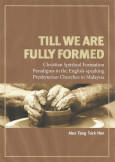Mercy Ships and Medical Mission
Christian Medical Mission on the Seas
Saving Faces
Mercy Ships surgeons perform medical miracles daily in remote ports of call.
Deann Alford in Accra, Ghana posted 12/14/2007 08:30AM
…on July 7, 1982, the Anastasis, a rehabbed 1953 Italian cruise liner, set sail for major ports throughout the majority world. It was the beginning of Mercy Ships, founded in 1978 within the nondenominational mission agency YWAM (Youth With a Mission).
As a floating hospital, its mission was to bring world-class surgeons and free medical care to the poor in the name of Christ. It was a dream come true for missionaries Don Stephens, his wife Deyon, and a dogged group of YWAMers who volunteered their labor for years before the Anastasis entered service. "Mercy Ships focuses on the lowest tier of need," founder Stephens told Christianity Today.
The original idea of a charitable hospital ship goes back five decades. From 1960 to 1974, the SS Hope, a decommissioned U.S. Navy hospital ship, visited 11 ports in developing countries, bringing medical care to civilians without access to such. After the horrors of World War II, the SS Hope was a global inspiration and captured the imagination of Stephens and YWAM leaders. Project HOPE (Health Opportunities for People Everywhere) operated this ship. (It is now a land-based charity that provides health care expertise to agencies in the developing world.)…
Stephens told CT that the theology of Mercy Ships is based on four "M"s—model, message, methods, and metrics.
Jesus is the model. Stephens said, "For the gospel in the 21st century, Muslims, Hindus, and animists—they must see the Good News as well as hear the Good News. The gospel has two hands—doing it as well as teaching it. I see this in the model of Jesus."
The second "M"—message—is about "the nature and character of a loving God," because so many people never hear that God loves them individually, he said.
Mercy Ships' methods are twofold: hospital ships and on-shore development projects. One of its newest on-shore efforts is called Operation New Steps, started to respond to this gruesome fact: Land mines have severed the legs of some 30,000 children in the last 30 years. New Steps started as a 40-foot sea container equipped to manufacture a prosthesis within 24 hours. It now has its own stand-alone center and also works with polio patients.
Finally, Stephens uses the metrics of "cost per person served" to assess how well Mercy Ships does its work. He said costs are kept to a minimum because Mercy Ships staff raises their own financial support, and corporations donate millions in medical devices each year…
read complete article here
Related Elsewhere:
Christianity Today previously reported on Mercy Ships in "Hope for the Living Dead" and "Against the Tide." The organization was one of our 100 Things the Church Is Doing Right.
Mercy Ships has photos, stories, and more about its ministry
Labels: Medical Students, Medicine, Mission















0 Comments:
Post a Comment
<< Home